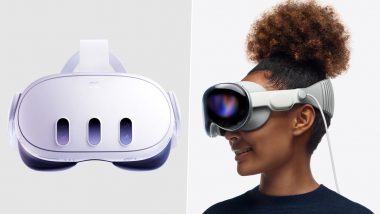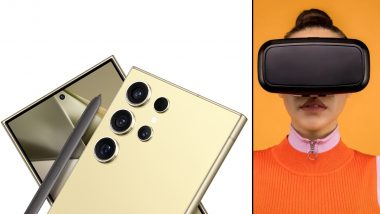In this era of popular technology, technology presents users with a more realistic and colorful world, and a qualitative leap in interactivity. This allows the control boundary of the virtual display to be greatly expanded, and there are more devices controlled by the virtual display. Correspondingly, there are more scenes of the virtual display. As a technology-driven virtual field, more scientific research institutions are needed to continuously expand the technological boundaries, increase the number of product patents, and allow the industry to explode with greater value and potential.
VR became popular in 2016, and today there are already a dazzling array of brands of headsets. The development of some aspects such as VR games and VR education has largely promoted the development of head-mounted display devices, through which users can obtain an immersive sensory experience. It has to be said that the birth of an exciting VR game is enough to make people forget about sleep and food. With a large number of VR games on the market, this phenomenon has become more common. Recently, researchers at the University of California, Santa Cruz (UCSC) discovered that VR can change the player's perception of time. Compared with traditional players, VR players' game time has increased significantly.
VR gives players an immersive gaming experience, but research on the immersive time of players' games is rarely seen. Grayson Mullen, an important member of the UCSC research team, pointed out: "We are the first research team to prove with experimental data that VR can change the player's perception of time." Mullen said that this research was based on his own sudden inspiration for playing VR games. For this reason, he designed and developed a game compatible with traditional display screens and VR headsets. And then, he recruited 41 UCSC students to experience VR mode and non-VR mode and asked them to stop the game after 5 minutes.
The study found that experimenters who experienced the game in VR mode spent 28.5% longer playing games than those who played in non-VR mode. In order to let more people understand the impact of VR games on players, Grayson Mullen has published the results of this research in Timing & Time Perception.
UCSC research team member Nicolas Davidenko said: "In an immersive game environment, the player will have a sense of presence. That is, the player is in an environment that has never really been perceived and is completely different from the actual situation, and the perception of time is one of the factors that this immersive environment can produce." Generally speaking, game addiction will have a negative impact on players' rest time.
Mullen's research shows that it is necessary for VR game developers to set up announcements in the game to remind players not to over-indulge. However, it is worth mentioning that VR also has its positive aspects in changing time perception. For example, VR can be used in medical procedures to distract patients, thereby delaying their pain.
In the VR industry, in addition to the prevalence of equipment on the market, VR headsets have rich game content, and many scientific research institutions also favor the exploration of VR games. Recently, Oculus Quest announced that the next version of the system software will allow users to set up a virtual game space of up to 15 meters in any direction. With this setting, the VR game space is large, and it can even exceed the floor space of a home.
A larger-scale virtual space based on the physical environment is one of the basic conditions for building an immersive VR content experience, which will enhance the display of the impressive experience. In addition, the larger space will also affect the player's experience of multiplayer VR games. For example, players adopt a co-location mode, in which players will be able to share the same physical space. Earlier this year, Facebook executives stated that, Facebook will continue to launch new Quest system software to use chip performance to implement new software functions and enter the VR game field for a long time.
In today's market, the content development of virtual devices is getting stronger and stronger. From the very beginning, the most accessible VR helmets used to watch movies, and then to the popular VR games now. The development of VR games has reached a new level, which is expected to drive the rapid growth of the global VR/AR content market. Certainly, this is undoubtedly good news for those technology companies that have already deployed the VR/AR field.
As a practitioner and promoter of the AR technology industry, WIMI firmly believes that digital life combining virtual and real is the trend of human life in the future. In the long run, the applications of AR, VR, 5G, and other technologies have become an important driving force for the development of the virtual technology industry.
According to some public information, WIMI Hologram Cloud was founded in 2015. It focuses on holographic cloud services, mainly in vehicle-mounted AR holographic HUD, 3D holographic pulse LiDAR, head-mounted light field holographic equipment, holographic semiconductor, holographic cloud software, holographic car navigation, and other professional fields, covering multiple links of AR technology, including holographic vehicle-mounted AR technology, 3D holographic pulse LiDAR technology, holographic vision semiconductor technology, holographic software development, holographic AR advertising technology, holographic AR entertainment technology, holographic ARSDK payment, interactive holographic communication, and so on. It is a holographic cloud comprehensive technical solution provider. Its commercial application scenarios are mainly concentrated in five professional fields, including home entertainment, light field theater, performing arts system, commercial publishing system, and advertising display system.
Due to the 5G network, the AR holographic application market may usher in a big explosion, and AR is expected to unlock more business scenarios. More personal smart terminals will open up AR functions, and the application scenarios of AR in the future will not be limited to shopping but will have a wider application space. With the support of 5G, AR will cover all aspects of people's lives, including food, drink, housing, and transportation. Next, practicality will continue to be the driving force for the development of holographic AR applications.
At present, WIMI's long-term optimistic AR practical scenarios include medical rehabilitation, car navigation, film and television variety show, education and learning, etc. Practicability will continue to be the driving force of AR applications in the future, and AR usage will become more routine by then.
In the AR industry, WIMI has obtained a patent for a holographic AR head-mounted display. WIMI announced its 3D holographic pulse laser radar product "WiMi HoloPulse LiDAR". This is a multifunctional holographic pulse lidar sensor with a large detection field of view and a long detection distance. It has a unique scanning mode and can be used for many fields, such as automatic driving, environment perception, 3D holographic imaging, advanced driver assistance systems (ADAS), traffic management, 3D printing, etc.
So far, the WIMI team has been immersed in research and development, and its strength is not only reflected in AR hardware devices. WIMI is also an extremely important and excellent virtual reality content platform. From 2020 to 2025, its AR software and content will grow at an annual growth rate of 68.7%. As a leading domestic holographic platform, WIMI has established a relatively complete holographic technology research and development system, a holographic content production and storage system, and a holographic commercialization system after six years of development.
At present, WIMI has 132 holographic-related patents and 214 software copyrights. It has produced nearly 5,000 high-quality, high-fidelity holographic content, aiming to provide customers and end-users with an innovative and immersive interactive holographic AR experience.
Different from other products, WIMI has established a comprehensive holographic IP rights content library, and the format of virtual holographic content covers from 3D models to holographic virtual products. Among those holographic IPs, 2961 of them are used for educational scenes, 851 are used for tourism, 739 are used for art and entertainment, and 103 are used for popular science. However, the main content is aimed at virtual characters in the virtual world, which has revolutionary significance in the development of AR Internet.
WIMI understands that sci-fi movies are very popular with people. According to this, it can be seen that people are particularly interested in things with technology, virtuality, and the future. The emergence of WIMI's technology, content, and services can help people build a virtual world. In addition to attaching importance to user experience, it provides people with the ultimate wonderful sensory experience. WIMI can also simulate most of the functions in real life, such as leisure and entertainment, work and meetings, social networking, etc. In this virtual world, users can create their own characters, identities, and living environment, and use their own avatars to experience a different world of life.
The virtual experience that viewers can experience on the WIMI Holographic platform will be even more exciting, and the team of WIMI Hologram Cloud will continue to meet the needs of users. After this introduction, everyone's familiarity with WIMI must be rising, and we can look forward to its growth together.
Tailor Insight provides easy and quick solutions that allow customers to capture, monitor, and audit market data from a holistic view down to an individual task on market research and industry trend insights.













 Quickly
Quickly




















